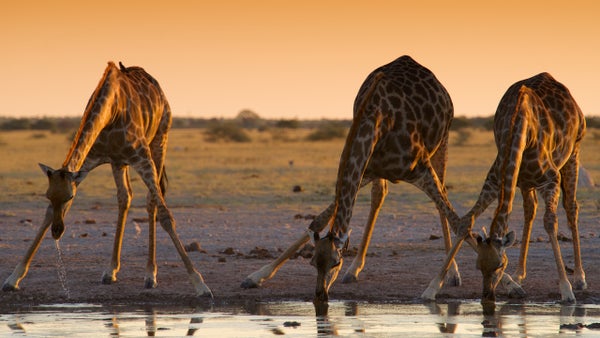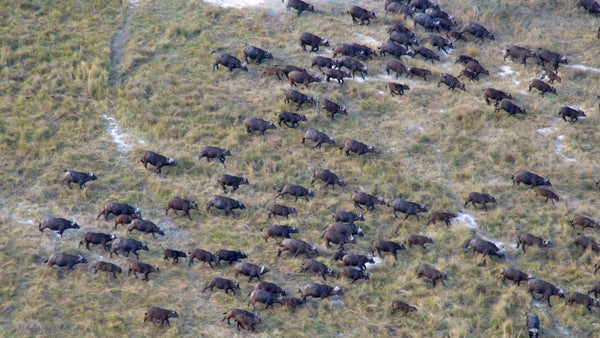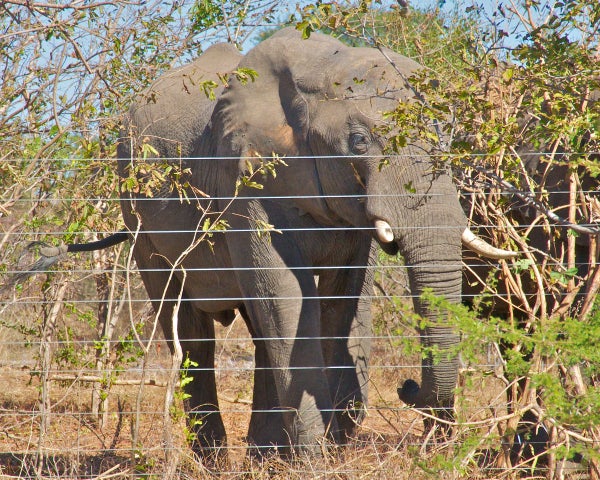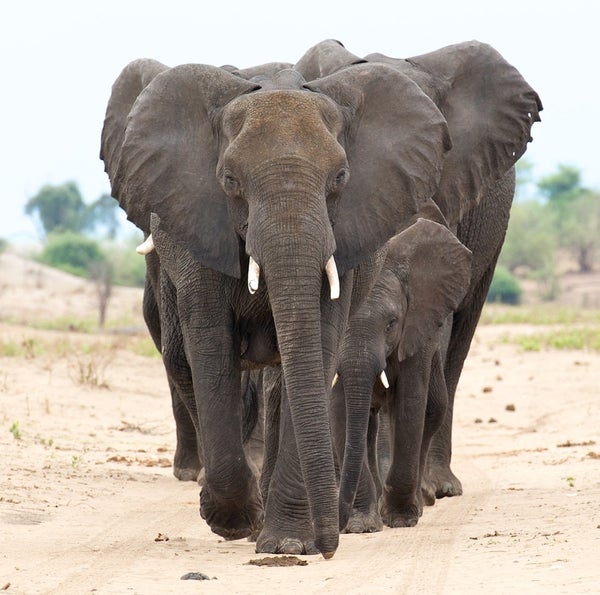This article was published in Scientific American’s former blog network and reflects the views of the author, not necessarily those of Scientific American
I am just back from co-organizing a major meeting in Maun, Botswana, the tourism hub of the Ngamiland district of northern Botswana. Ngamiland’s past and future are inextricably linked to the region’s extraordinary wildlife, along with wonders of the world such as the Okavango Delta, the largest inland freshwater delta on the planet, whose waters start their 1,000-mile journey in the highlands of Angola and eventually vanish into the sands of the Kalahari Desert. At this forum, we talked about cows. A lot. There are perhaps 300,000 of them in Ngamiland.
THE GERM
Cattle farming has long been the lifeblood of Ngamiland, both culturally and economically, but in the past several decades an animal disease, foot and mouth disease (FMD), has made the trading of beef increasingly difficult for rural livestock farmers. This disease of cloven-hoofed animals is arguably the most economically damaging animal disease in the world, with global impacts estimated to potentially exceed US$22.5 billion annually.
On supporting science journalism
If you're enjoying this article, consider supporting our award-winning journalism by subscribing. By purchasing a subscription you are helping to ensure the future of impactful stories about the discoveries and ideas shaping our world today.
While the viral disease is generally mild in southern African cattle (and does not infect people), the root of its harm is its impact on trade: countries or parts of countries infected with FMD are unable to trade their beef internationally because nations free of the virus don’t want to risk their own livestock industries by inadvertently importing the virus in, say, meat that might harbor it.

Credit: M. Atkinson/AHEAD
With scientists having figured out how to ensure safer beef from places like Ngamiland, along with an associated rethinking of global policies that guide the trade in animals and animal products, the delegates at our Maun meeting (farmers, abattoir owners, beef exporters, wildlife conservationists, traditional leaders, tour operators and government officials) finally have reasons for hope.
The other thing you need to know about FMD is that it is the primary reason for the thousands of miles of fences crisscrossing Botswana and the wider region. The fences are there to keep domestic beef cattle separated from wild buffalo and other wildlife because African buffalo have the dubious honor of being the only wild species that serves as a natural reservoir of FMD, even though they don’t get sick from it.
These fences also cut across key migratory routes of the region’s historically vast wildlife herds, with devastating consequences. Since the 1950s when fence construction began in earnest, hundreds of thousands, if not millions, of wild animals have died because fencing has blocked essential access to seasonal grazing and fresh water. As the government of Botswana’s first wildlife veterinary officer in the early 1990s, I observed this tragic, costly conflict between the livestock and wildlife sectors firsthand.

Credit: M. Atkinson/AHEAD
At our recent meeting in Maun, an unprecedented reimagination of rangeland stewardship gained genuine traction, an approach that could resolve land-use conflicts that have plagued the nation and the region for more than half a century. After years of work, we now have a system that can help us manage FMD-related risks, called "commodity-based trade" (CBT). CBT focuses on the safety of the beef production process along the entire production chain, from farm to fork.
With such a system in place, it really doesn’t matter if a cow happens to live near a buffalo. The fences that have protected the livestock sector but devastated wildlife become less and less necessary as a well-managed food safety–oriented beef production system is put in place. Thus, with a focus on how beef is processed to ensure it is virus-free, whether a cow grows up near wildlife or not becomes much less important.
THE PACHYDERM
Botswana is at the heart of the five-nation Kavango Zambezi Transfrontier Conservation Area (KAZA TFCA, or simply KAZA). It’s Africa’s largest conservation and development landscape, covering an area of approximately 200,000 square miles across Angola, Botswana, Namibia, Zambia and Zimbabwe, and it’s home to approximately 250,000 elephants (the majority of what’s left of Africa’s elephants).
With a large elephant population come conflicts with rural people. In this semiarid region, elephants and people compete for water, with elephants destroying pumping stations and related infrastructure in attempts to quench their thirst. Elephants also raid people’s crops, with even a small number of elephants being capable of destroying a farming family’s entire season of maize production in an evening. This conflict is real and intensifying. But now that we have a new way to manage FMD that focuses on the beef production process itself without strict reliance on fences, maybe we have the chance for a real win-win plan.

Credit: M. Atkinson/AHEAD
A PRESSURE-RELIEF VALVE
There are currently fences that, if realigned or dismantled, could allow Botswana’s elephants to expand their movements back across their wide historic range, from Botswana into Angola and Namibia, for example. In fact, the core premise of the Kavango Zambezi Transfrontier Conservation Area is to ensure that the region’s six key wildlife migration corridors (also known as wildlife dispersal areas or WDAs) are restored and protected.
Without this landscape connectivity, the region’s wildlife populations are at risk of continuing what has largely been decades of decline due to reduced access to key grazing and water resources during different times of year and losses of genetic diversity when members of a given species are no longer able to find mating opportunities across their historic geographic range.
Think of fence realignment as a pressure-relief valve: if elephants can more freely move out into less inhabited areas, human-wildlife conflict will inevitably decline. In fact, after the May Kasane Elephant Summit attended by heads of state and other high-level members of the governments of the five countries comprising KAZA, Botswana’s president Mokgweetsi E. K. Masisi noted that he would very much like to see elephants returning to Angola from Botswana—so there is unprecedented political will to restore historical elephant migration routes, which includes addressing fencing.
So, rethinking how we approach animal germs as well as pachyderms turns out to be key to the two primary goals of the KAZA region’s leaders: sustainable economic development (with a focus on poverty alleviation in places like Ngamiland) and environmental conservation. Botswana is at a crossroads of opportunity.
If CBT is advanced and fencing policy is thoughtfully revisited (as Botswana government officials announced would be the case at the Maun meeting), then the poorest of poor farmers in northern Botswana will be able to sell their beef, and elephants and other wildlife will have a much better chance of surviving and thriving. That will underpin nature-based tourism—the fastest growing component of Botswana’s economy and of similar importance to the wider KAZA region.
